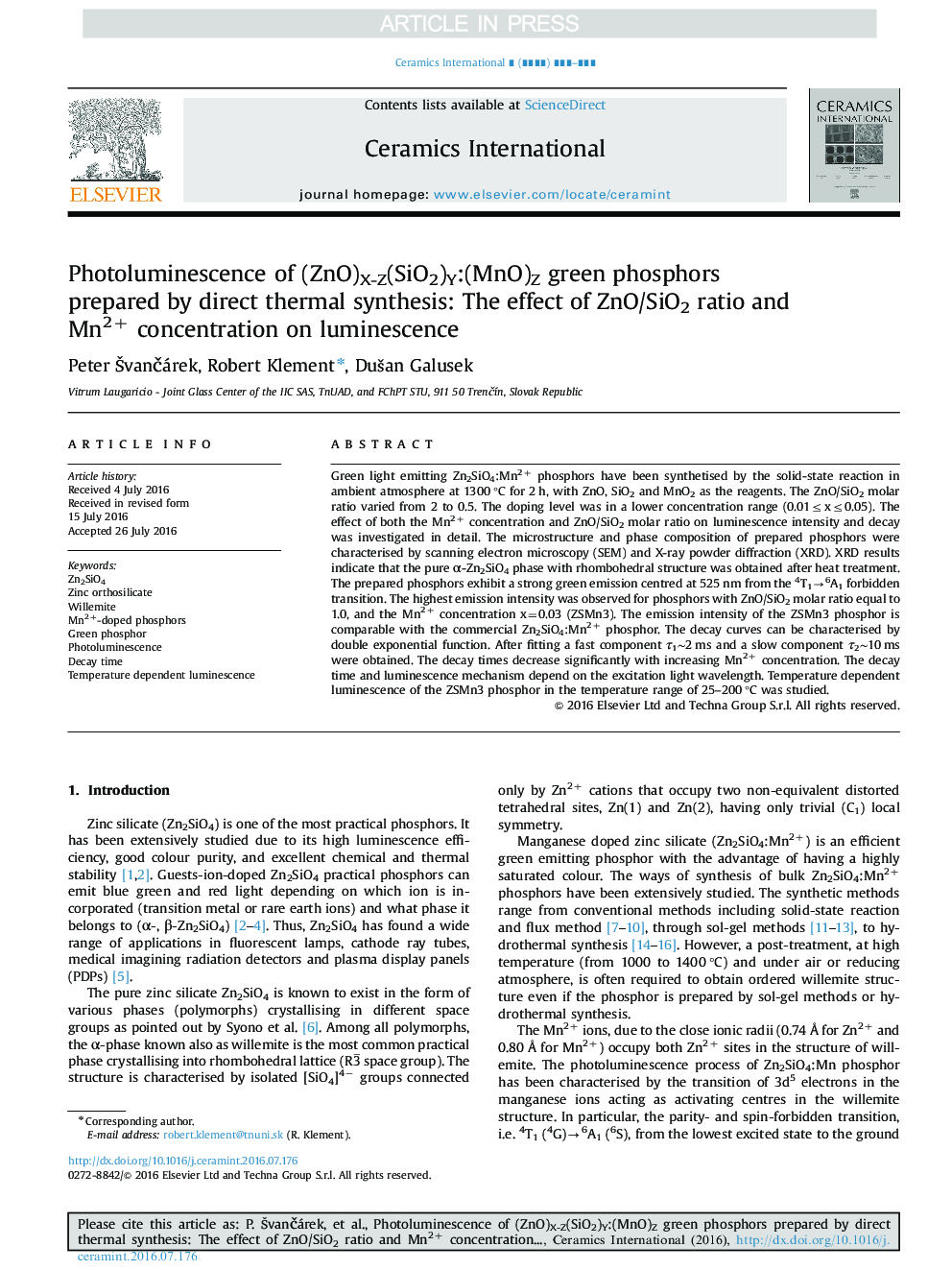| Article ID | Journal | Published Year | Pages | File Type |
|---|---|---|---|---|
| 5438738 | Ceramics International | 2016 | 9 Pages |
Abstract
Green light emitting Zn2SiO4:Mn2+ phosphors have been synthetised by the solid-state reaction in ambient atmosphere at 1300 °C for 2 h, with ZnO, SiO2 and MnO2 as the reagents. The ZnO/SiO2 molar ratio varied from 2 to 0.5. The doping level was in a lower concentration range (0.01â¤xâ¤0.05). The effect of both the Mn2+ concentration and ZnO/SiO2 molar ratio on luminescence intensity and decay was investigated in detail. The microstructure and phase composition of prepared phosphors were characterised by scanning electron microscopy (SEM) and X-ray powder diffraction (XRD). XRD results indicate that the pure α-Zn2SiO4 phase with rhombohedral structure was obtained after heat treatment. The prepared phosphors exhibit a strong green emission centred at 525 nm from the 4T1â6A1 forbidden transition. The highest emission intensity was observed for phosphors with ZnO/SiO2 molar ratio equal to 1.0, and the Mn2+ concentration x=0.03 (ZSMn3). The emission intensity of the ZSMn3 phosphor is comparable with the commercial Zn2SiO4:Mn2+ phosphor. The decay curves can be characterised by double exponential function. After fitting a fast component Ï1â¼2 ms and a slow component Ï2â¼10 ms were obtained. The decay times decrease significantly with increasing Mn2+ concentration. The decay time and luminescence mechanism depend on the excitation light wavelength. Temperature dependent luminescence of the ZSMn3 phosphor in the temperature range of 25-200 °C was studied.
Keywords
Related Topics
Physical Sciences and Engineering
Materials Science
Ceramics and Composites
Authors
Peter Å vanÄárek, Robert Klement, DuÅ¡an Galusek,
